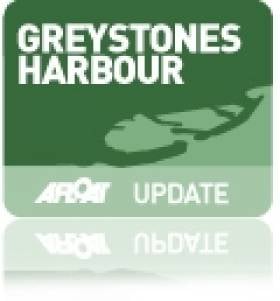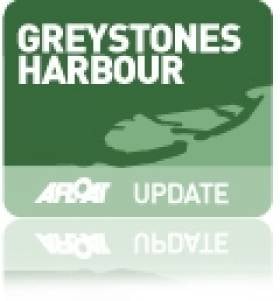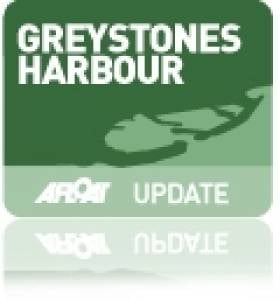Displaying items by tag: Greystones Marina
BJ Marine 'Taste of Greystones' Regatta This Weekend Celebrates a Unique Town & Harbour
The problem with Greystones is that it faces the sea writes W M Nixon. Or at the very least, there isn’t a part of the north Wicklow town in which you aren’t very aware that the sea is nearby. The Victorian and Edwardian enthusiasts for sea-air breathing and salt-water bathing who turned this quaint fishing village into a niche seaside resort and healthy residential area would scoff at the idea that always facing the sea in this way was a “problem”. But we’re talking about the optics here, folks.
The thing is that, when you’re in Greystones, you’re somehow unaware that it is located at the heart of one of the most scenically-blessed parts of Ireland. In fact, in looking at a selection of aerial images of Greystones as it snuggles by the coast in close relation to the most wonderful mixture of farm and woodland and uplands and fascinating purple mountains which draw the eye over the hills and far away, you could be forgiven for thinking this is the most beautiful part of Ireland, full stop. And in fact, you might well be right.
Yet in the old days, only the occasional lone aviator and those of us sailing past were fully aware of this magnificent backdrop to the little town. And as the harbour was a somewhat ramshackle affair based around the re-cycling of the failed first attempt to build the Kish Lighthouse (even here, we don’t have the space to tell the full story of that extraordinary saga), any passing cruising yacht was reluctant to go into the tiny, shallow, rough and ready small-boat-packed haven and tell the clientele at the harbourside Beach House what an utterly fantastic place they lived in.
However, some locals did appreciate it properly. Greystones Sailing Club celebrated its Golden Jubilee last year, and among its founder members were the parents of current Irish Sailing President Jack Roy, who cut his own sailing teeth in Greystones, still thinks of the place as home, and was Guest of Honour among a convivial crowd of distinguished folk from every walk of north Wicklow life at the 50th Anniversary party in June 2018.
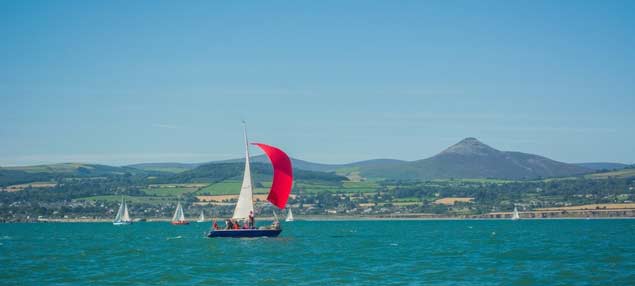 What a backdrop for sailing……Greystones provides good racing off one of the most beautiful coastlines in Ireland, and now it has a proper harbour to facilitate full enjoyment of its attractions and hospitality for visiting boats. Photo GSC
What a backdrop for sailing……Greystones provides good racing off one of the most beautiful coastlines in Ireland, and now it has a proper harbour to facilitate full enjoyment of its attractions and hospitality for visiting boats. Photo GSC
 And if anything, that coastline looks even more impressive when there’s a bit of a breeze. Photo GSC
And if anything, that coastline looks even more impressive when there’s a bit of a breeze. Photo GSC
But the Greystones Harbour area of 2018 and 2019 is a very different waterfront place from the Greystones of 1968 when the new sailing club began to stake its claim to a place along the beach and a compound to keep its sailing dinghies, plus a bit of space in the tiny harbour for its flotilla of small cruisers. For Greystones Harbour is now a proper marina with complete shoreside facilities run by BJ Marine and a shared clubhouse beside a spacious and secure dinghy park.
Progress towards this vibrant state of affairs has of course not always been smooth, particularly as key parts of it were happening during the Great Recession of a decade ago. But now, instead of being a place you sailed past and marvelled at the scenery in which it is set, it has become a destination harbour three times over.
For it is not only a strategically located and totally sheltered haven, conveniently near Dublin yet far enough away to stand out as a place in its own right, it’s also a gastronomic destination from land and sea, with attractions to suit foodies and gourmets of all persuasions, together with those who just like a hospitable and friendly place serving decent pints and good home-cooked fare. And on top of all that, Greystones Sailing Club has become a pace-setter on the national scene.
Commodore Daphne Hoolahan leads an enthusiastic membership with a formidably talented lineup of specialist officers, and while it may be unfair to single out individuals, when you have people of the calibre of Monica Schaefer as Honorary Sailing Secretary and Daragh Cafferky as the man in charge of keelboats and clubhouse matters, not to mention Norman Lee as Honorary Club Bo’sun in addition to managing the dinghies, then it’s clear we’re dealing with efficient can-do people, rather than dreamy ’twill-do folk.
The results bear it up. Just last weekend, Greystones’ own Shane McCarthy, crewed by clubmate Damien Bracken, regained the Irish GP 14 National title in blustery conditions at Skerries against a truly international fleet which reflected the fact that in 2020, Skerries will be hosting the International GP 14 Worlds.
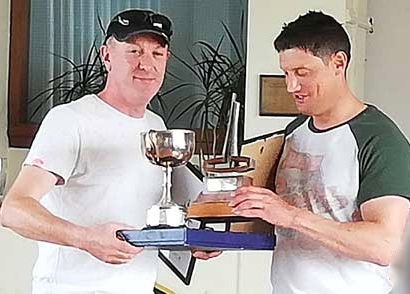 Damien Bracken (left) and Shane McCarthy of Greystones with their trophies after the latter had helmed their way to overall victory from an international fleet at the Irish GP 14 Nationals in Skerries last weekend. Photo SSC
Damien Bracken (left) and Shane McCarthy of Greystones with their trophies after the latter had helmed their way to overall victory from an international fleet at the Irish GP 14 Nationals in Skerries last weekend. Photo SSC
But Skerries can only envy Greystones in its soaring success, for the Fingal port bears much the same relationship to the Greater Dublin area to the north as Greystones does to the south. Yet while Skerries continues to struggle to persuade the powers that be that its primitive harbour badly needs development to allow water and boat sports to grow properly and safely, Greystones sails securely on with confidence in a proper harbour.
And 2019 saw the Greystones hosting of a world dinghy championship too. The fact that it was the Wayfarer Worlds in July is in the best-established traditions of Greystones as something of a niche place, for the superb 16ft Ian Proctor-designed Wayfarer would be much more popular globally if more people were aware of its exceptional versatility - excellent club racing and a record of Icelandic and trans-North Sea voyaging are only two of its many attributes.
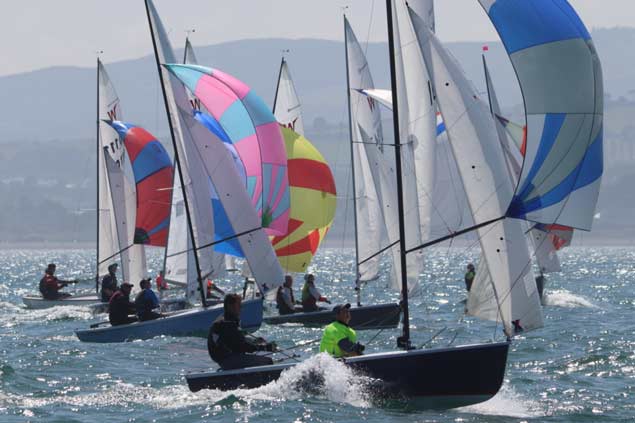 The versatile Wayfarers having magnificent sailing in their Worlds at Greystones, July 2019. Photo Alan Jones
The versatile Wayfarers having magnificent sailing in their Worlds at Greystones, July 2019. Photo Alan Jones
But Wayfarer people are a special crowd, they prefer personal quality to mindless quantity in the crews they race against. Yet even with that selective approach, the 2019 International Wayfarer Worlds attracted a cracking fleet of 53 quality boats from seven nations on both sides of the Atlantic, and while UK crews made up the bulk of the visitors, there was a very strong turnout from Denmark.
Yes, Denmark…..world leaders in the marine industry, yet the Danes have the savvy to cop on that the Wayfarer is something very special. And it makes this an extraordinary week on Afloat.ie. For we can go for months with little mention of Denmark apart from the occasional reference to the Irish success of some Danish-built X Yacht. Yet in recent days, we’ve carried a story about how the rape and pillage of the Vikings (many of whom were Danish) actually did a world of good for the degenerating Irish genetic line (something which, as the home of the world’s leading equine bloodstock industry, we should truly appreciate), we’ve also carried the story of how gallant little Denmark on behalf of its large island of Greenland has said thanks but no thanks to Donald Trump’s offer to buy Greenland even as our own beloved ketch Ilen of Limerick was port-hopping along the Greenland coast, and now we are reminded again that it is the Danes who are among those who best appreciate the virtues of the Wayfarer dinghy.
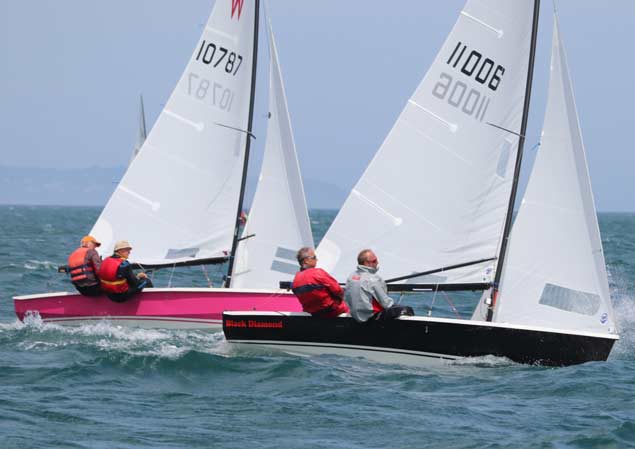 Beware. The Danes are on the coast……Stephan Nandrup-Bus of Herselve Strand Sailing Club in Denmark, crewed by Hans Wiggens Hansen in 11006, looks to have things comfortably in control off Greystones over clubmate Jan Kjeldsen crewed by Jorgen Blitzer in 10797. But in the end, Kjeldsen was 9th overall while Nandrup-Bus was tenth. Photo Alan Jones
Beware. The Danes are on the coast……Stephan Nandrup-Bus of Herselve Strand Sailing Club in Denmark, crewed by Hans Wiggens Hansen in 11006, looks to have things comfortably in control off Greystones over clubmate Jan Kjeldsen crewed by Jorgen Blitzer in 10797. But in the end, Kjeldsen was 9th overall while Nandrup-Bus was tenth. Photo Alan Jones
In fact, they almost won the Wayfarer Worlds at Greystones in July. Mogens Just and Anders Frils from Kalovig Badelaug in Denmark won the first race, and they logged two more wins and a second and third before being pipped at the post by the legendary sailmaker Mike McNamara of Rollesbury Broad SC in the heart of England’s Norfolk Broads, crewed by Simon Townsend.
Sailing Wayfarers keeps you young – Mike McNamara is reputedly 76, but his performance afloat belies it, and his performance to finish with a final score of 7 points to the 8 of Mogens Just said most things. Yet despite his Irish name, it couldn’t be claimed as a home win, for he operates as the sixth generation of sailmakers in the family firm, and six generations away from the McNamara heartlands around Lisdoonvarna and Ennistymon in north Clare is a very long time indeed.
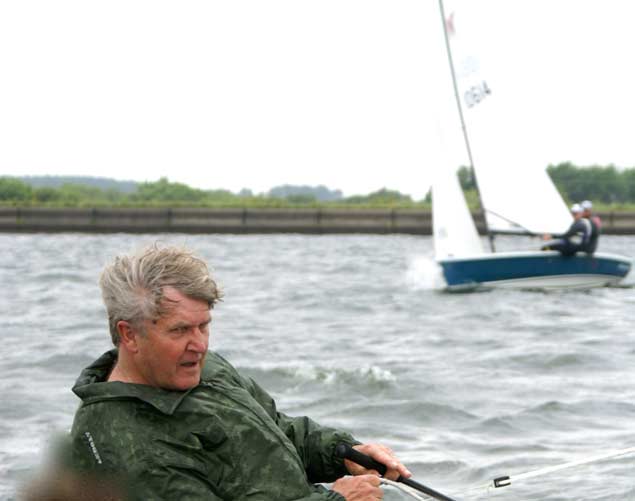 “My name is McNamara, I’m the leader of the band….” At the age of 76, veteran sailmaker Mike McNamara became the 2019 Wayfarer World Champion by just one point from Mogens Just of Denmark.
“My name is McNamara, I’m the leader of the band….” At the age of 76, veteran sailmaker Mike McNamara became the 2019 Wayfarer World Champion by just one point from Mogens Just of Denmark.
But at Greystones while McNamara and Townsend may have won by one point from the Danish Just/Fris crew, although two UK helms – Andrew Whitney and Bill Wilson – were next in line, the Danes then took seven places in a row in the shape of Niels Aislev (5th), Bjarne Lindquist (6th), Christian Elkjaer Iverson (7th), Christian Milert Hansen (8th), Christian Milert Hansen (9th), Jan Kjeldsen (10th) and Stephan Nandrup-Bus (11th), making it the most successful yet friendly Viking invasion on the Wicklow coast in a long time which the Irish had to accept gracefully, our best place being first in the Silver Fleet for the host club’s John Turner and Ken Lee, but in a fleet of this calibre that made them 15th overall. Full results here
Just to look back on the photos of the sunlit Wayfarer Worlds at Greystones in July is a real tonic after the cold and heartless weather of August. But for this weekend’s multi-dimensional Greystones Regatta – sponsored by BJ Marine and in association with Taste of Greystones - the seemingly unstoppable Greystones good fortune looks like returning with Indian summer conditions, and everyone is mad keen to make the best of it at this jewel of the Wicklow coast.
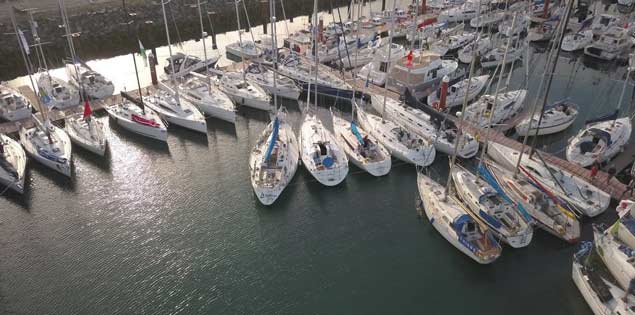 It’s regatta time, so they pack them in for sociable berthing in Greystones
It’s regatta time, so they pack them in for sociable berthing in Greystones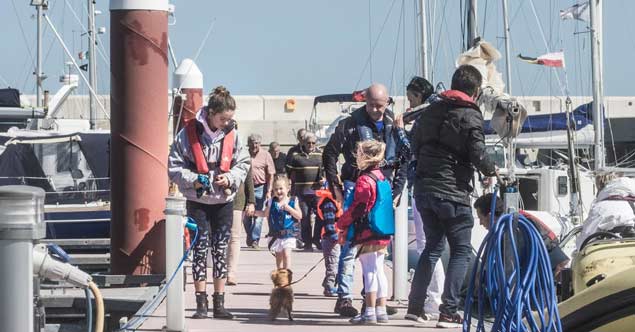 And the pooch comes too. The BJ Marine Taste of Greystones Regatta Weekend may see some serious racing, but it’s a family event as well
And the pooch comes too. The BJ Marine Taste of Greystones Regatta Weekend may see some serious racing, but it’s a family event as well
It is certainly rating very high with the cruiser-racing crowd, for the success of Greystones’ own Frank Whelan with his young crew on the keenly-campaigned Grand Soleil 44 Eleuthera - for two years and more now - brings heightened respect for the entire Greystones sailing scene. The word is that at least two of the classic Half Tonners associated with Howth – Dave Cullen’s Checkmate XV and Nigel Biggs’ Checkmate XIII - are going to make a proper weekend of it, while ISORA’s time-honoured annual James C Eadie Cup Race is being tailored in such a way that the leaders, having started in Dun Laoghaire at 1000 hrs, should be getting to the finish line at Greystones around 1600hrs this afternoon in an updated version of the ISORA feeder race which last year was won by Chris Power Smith’s J/122 Aurelia.
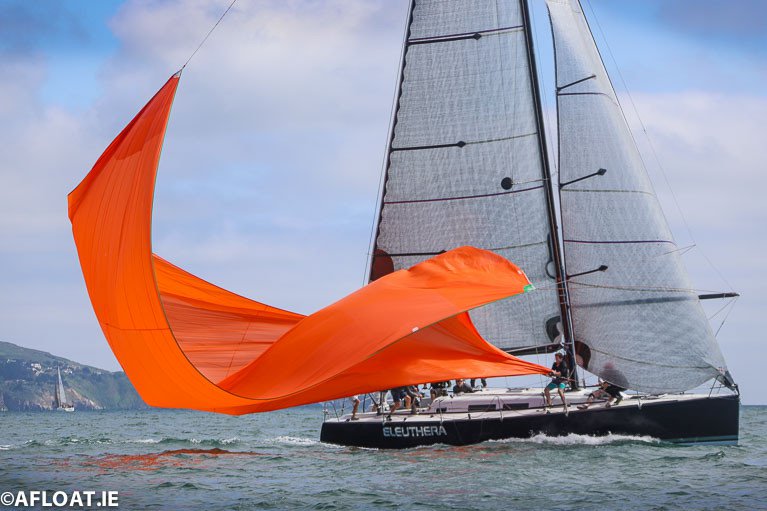 Champion for Greystones – Frank Whelan’s Grand Soleil 44 Eleuthera (GSC) on her way to one of many race victories in 2019. Photo Afloat
Champion for Greystones – Frank Whelan’s Grand Soleil 44 Eleuthera (GSC) on her way to one of many race victories in 2019. Photo Afloat
Meanwhile the Dublin Bay Sailing Club fleet will be limbering up towards their usual Saturday starting sequence around 1400 hrs, but in this instance the finish will be at Greystones, bringing upwards of 70 boats from Dun Laoghaire, while additional feeder races from both Clontarf Y & BC and Poolbeg Y & BC will make Greystones Harbour a distinctly busy and convivial place this (Saturday) night.
Tomorrow (Sunday) the hope is to fit in two races with a reasonably early conclusion in five classes under ECHO, making it a hectic weekend for the volunteer element in Greystones SC, for the club’s total membership is around the 360 mark. The demand for the proper Committee Boat starting line means that Daragh Cafferky won’t be able to race his own A35 Another Adventure (just back from a “hugely enjoyable” visit to West Cork and Calves Week), as Another Adventure has to serve as Committee Boat, but needs must.
Last year Pat Kelly’s J/109 Storm from Rush and Howth was top boat overall and winner of Class 1 to win the Taste of Greystones Trophy, with second OA going to sister-ship White Mischief (Tim Goodbody, RIYC), while Dermot Cafferky’s Another Adventure was allowed at the racing in 2018, and was rewarded with third overall.
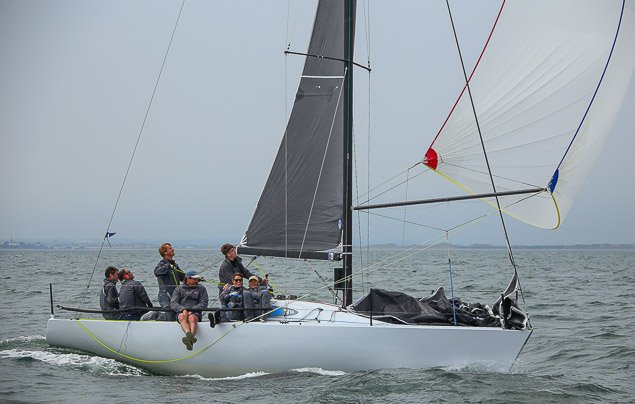 Nigel Biggs’ classic Half Tonner Checkmate XVIII was winner of Class 2 sailed by Ronan Keating at Greystones Regatta 2018. Photo: Afloat.ie/David O’Brien
Nigel Biggs’ classic Half Tonner Checkmate XVIII was winner of Class 2 sailed by Ronan Keating at Greystones Regatta 2018. Photo: Afloat.ie/David O’Brien
Class 2 went to Checkmate XVIII, while James Kirwan’s First 36.7 Boomerang of RStGYC and Greystones was second and local boat Virgin Triangle (Graham Noonan) took third. In Class 3, Brendan Foley’s impressively-optimised Impala 28 Running Wild (RStGYC) won out from Barry Cunningham’s Quarter Tonner Quest (RIYC) while Luke Fegan’s Hustler 32 Smokehaze, all the way down from Malahide, was third.
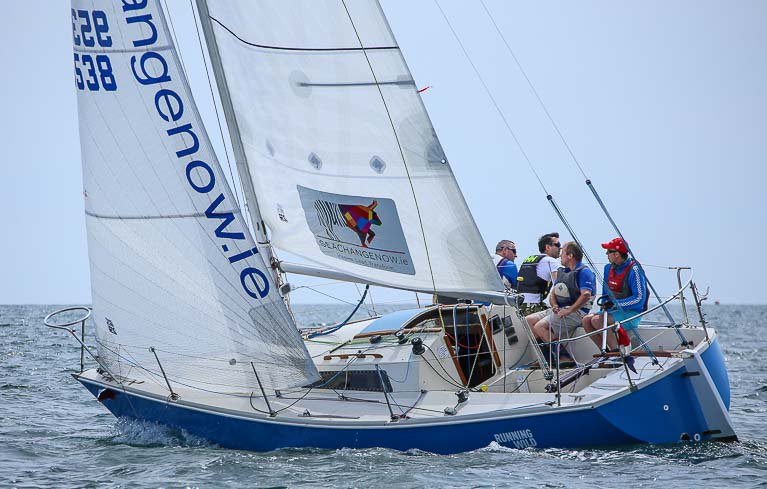 Brendan Foley’s impressively optimized Impala 28 Running Wild (RStGYC) took the Class 3 title at Greystones last year. Photo: Afloat.ie/David O’Brien
Brendan Foley’s impressively optimized Impala 28 Running Wild (RStGYC) took the Class 3 title at Greystones last year. Photo: Afloat.ie/David O’Brien
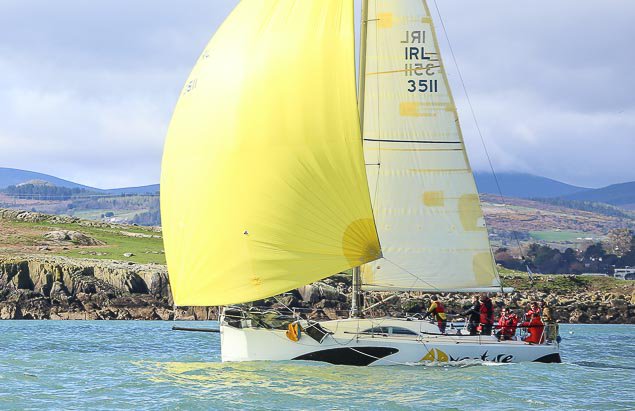 Daragh Cafferky’s A35 Another Adventure was on the podium at the 2018 Greystones Regatta, but this weekend she is doing duty as Committee Boat. Photo: Afloat.ie/David O’Brien
Daragh Cafferky’s A35 Another Adventure was on the podium at the 2018 Greystones Regatta, but this weekend she is doing duty as Committee Boat. Photo: Afloat.ie/David O’Brien
In White Sails Class 4, the Byrne family’s Jeanneau 34 Alphida from Howth was tops with Elantic (C Allen, Arklow SC) second and the Greystones boat Run’n’L8 (C McGuire) third, while in White Sails Class 5 J Raughter’s Chase Me from Bray took the title from E Lynch’s Alfresco from Wicklow, with another Bray boat, Fegan’s Nymadzi, getting third.
The impressive range of the prize winners’ home ports, from Arklow in the south to Malahide in the north while including every sailing centre in between, speaks volumes about what a marvellous celebration of East Coast sailing and its shoreside hospitality the Taste of Greystones has become.
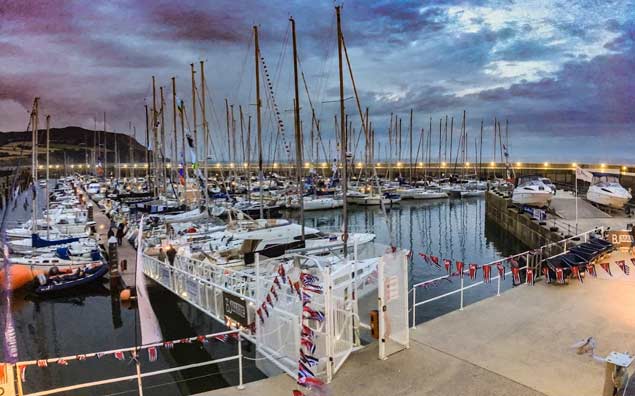 Regatta evening – the day’s sport is complete, and the harbour is full
Regatta evening – the day’s sport is complete, and the harbour is full
Yet just to show that this weekend’s popularity of Greystones Harbour isn’t a flash in the pan, in a week’s time the Irish Cruising Club will be holding its Annual East Coast Rally at Greystones, while thanks to the foul weather of mid-August, the annual Greystones Junior Regatta originally scheduled for August 18th had to be postponed, and is still something to be keenly anticipated.
And as a continually repeated theme underlying all sailing and boating, there is now the enduring fact that Greystones has become a very useful port of call for cruisers as they make their quiet way up and down the coast. Those of us with a taste for the East Coast for a long time always had to admit that while it was beautiful to look at and sail along, you were distracted from enjoying its beauty by concerns about how far it was to the next safe haven, particularly if the weather was acting up. The arrival of Greystones Marina has been transformative. We can only hope that its success will encourage other currently inadequate East Coast ports to see where their best future is to be found.
 This weekend, Greystones is the focal point for East Coast sailing, and an example for other harbours in need of development
This weekend, Greystones is the focal point for East Coast sailing, and an example for other harbours in need of development
Indian Summer for 2019 BJ Marine Taste of Greystones Regatta?
Greystones Sailing Club in County Wicklow believes that 'the summer that never happened' will surely kick in for its annual BJ Marine sponsored Taste Of Greystones Regatta next Sunday, 25th at Greystones Harbour Marina.
This east coast regatta has averaged over 100 entries for the last four years making it one of the largest keelboat regattas of its type each year.
Greystones Sailing Club's, Darragh Cafferkey, an ISORA sailor himself, says 'the usual legendary welcome awaits all those decamping from Arklow, Howth, Poolbeg, Bray, Wicklow and Dublin Bay en masse.
Most of the participating clubs are planning feeder races along with the ISORA fleet. According to Cafferkey, 'the continuing support of BJ Marine ensures the usual generous hospitality awaits all visitors'.
'Entry remains at €75 and when you count the free beer, food and berth you probably make a profit, he says.
'The aim remains to finish racing by 14.00 hrs, water and feed all competitors and let them get on the way home by 15.30'.
#Property - A sea view in scenic Greystones is just part of the appeal of Rowan Point at the Wicklow town’s Marina Village development.
The first phase of 58 apartments is now for sale off plans, with views either north to Bray Head, east to the sea or west to the Sugarloaf.
Prices range from €425,000 for first floor units to €950 for penthouses, and unique touches include local stone countertops.
The Irish Times has more on Rowan Point’s first phase HERE.
Howth Yacht Club Entries Win Class One & Two at Greystones Regatta: Results & Photo Gallery Here!
It was a case of third time lucky for Sunday's Greystones Regatta in County Wicklow. Despite a limp forecast, the full two race programme was sailed today in ideal sailing conditions, banishing the curse of the last two editions that have been cut short due to lack of wind.
Scroll down for a gallery of photos from the event by Alan Leddy
Overnight, it looked like little or no wind, but a surprise southerly of up to 24–knots produced perfect sailing conditions for the regatta that has proved an end–of–season hit for East Coast Sailing Clubs since it began in 2013.
101 boats entered, a little short of the anticipated 140, and racing began in 12–knots and built to 20 plus. Many boats had set up for light air sailing and the stronger breeze caught a few out, especially when it came from the SSE and brought a pronounced swell.
Download results below class by class below.
A feature of the Greystones Sailing Club event was that it ran both on IRC/Standard ECHO and current ECHO.
 Marty O'Leary on Storm was the Class One winner. Photo: Afloat.ie
Marty O'Leary on Storm was the Class One winner. Photo: Afloat.ie
Class One In 19–boat Class One, the north–Dublin based J109 Storm, that won the Scottish Series in May and skippered in Greystones by Marty O'Leary of Howth Yacht Club took two wins to beat Paul O'Higgins Rockabill VI of the Royal Irish Yacht Club. Frank Whelan's Eluthera of Greystones was third.
Class Two Ross Keating skippering the Half–Tonner Checkmate finished on equal points but first place in race one gave the Howth Yacht Club entry the overall win in 13–boat Class Two against Greystones Sailing Club's own Graeme Noonan in Virgin Triangle both on 4 points. Third was Jonathan Nicholson's DB II Red Rhum entry from the Royal St. George Yacht Club on eight points.
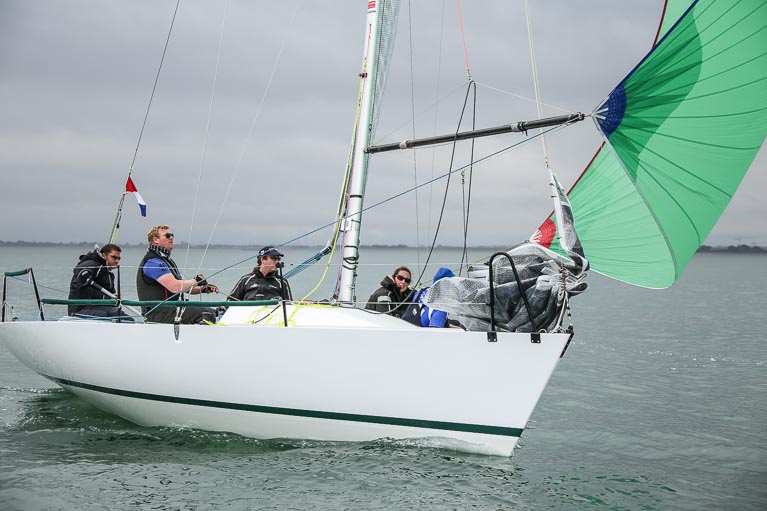 Paul Cunningham's Quest was the winner of 26–boat Class Three Photo Afloat.ie
Paul Cunningham's Quest was the winner of 26–boat Class Three Photo Afloat.ie
Class Three In the biggest class of the event, Paul Cunningham's Quest was the winner of 26–boat Class Three. The RIYC entry finished on the same three points as club mate Ken Lawless sailing Cartoon but was settled in Quest's favour thanks to the tie-break rule. Third was Brendan Foley's Impala Running Wild on seven points.
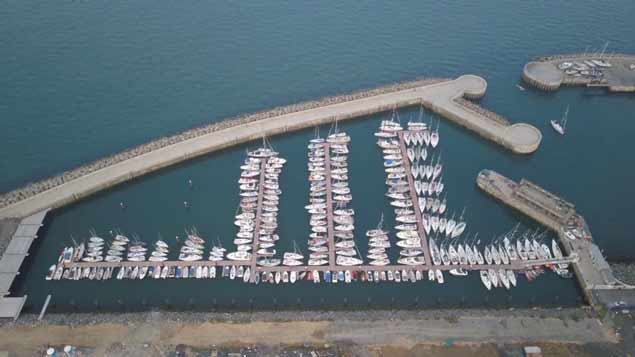 Greystones Harbour Marina was declared 'full' for the event. Photo: BJ Marine/Facebook
Greystones Harbour Marina was declared 'full' for the event. Photo: BJ Marine/Facebook
Download results below class by class below for the BJ Marine sponsored event
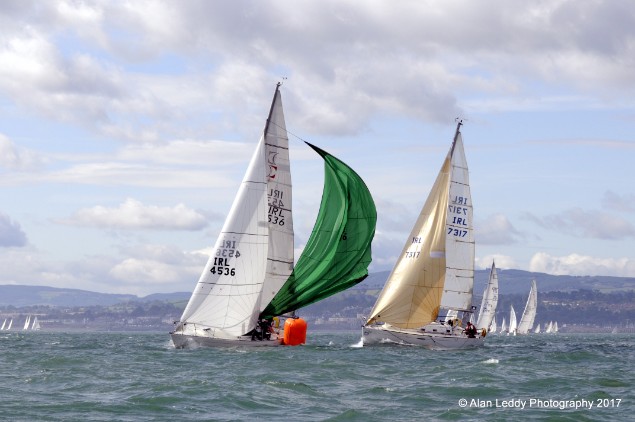
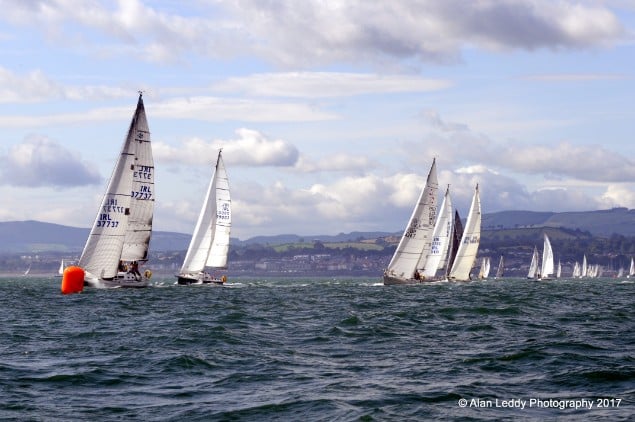

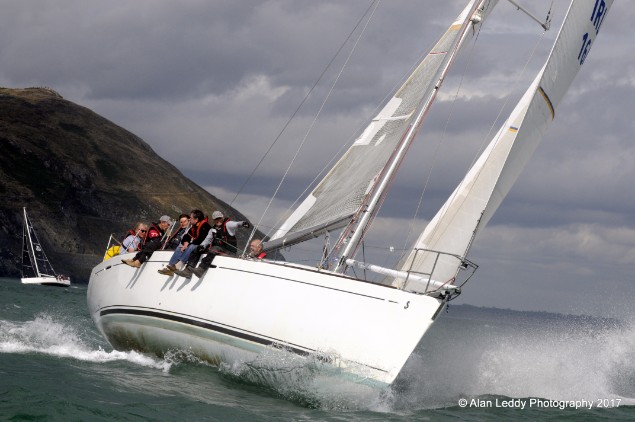
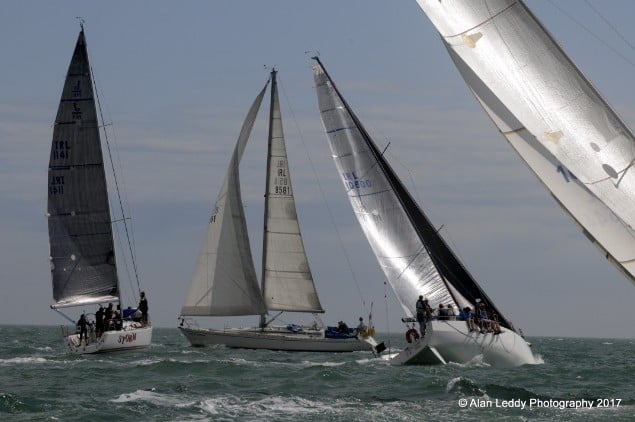
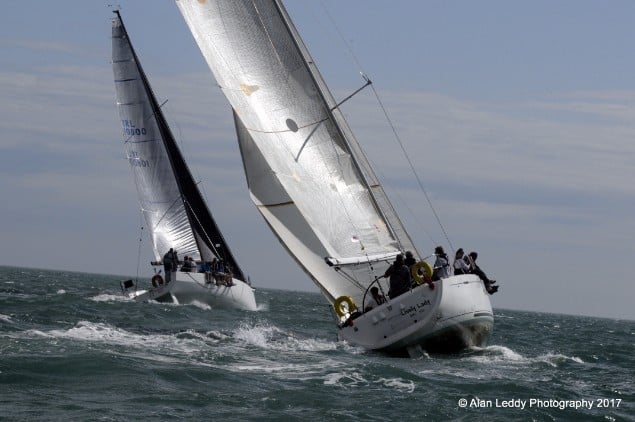
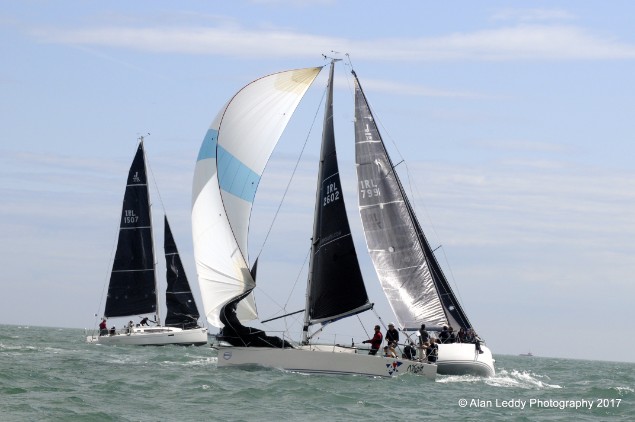
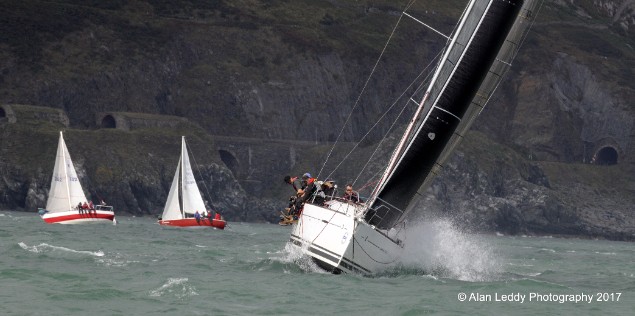

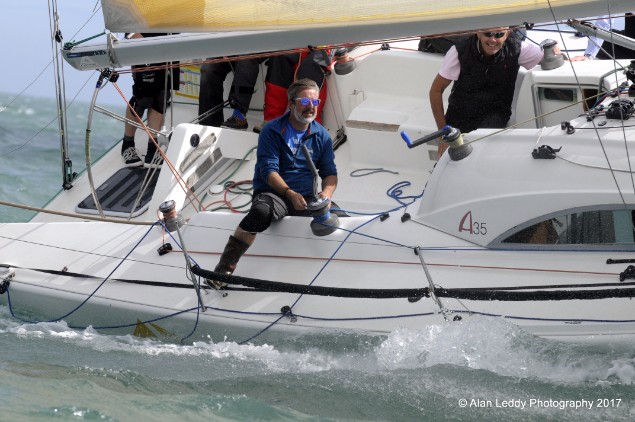
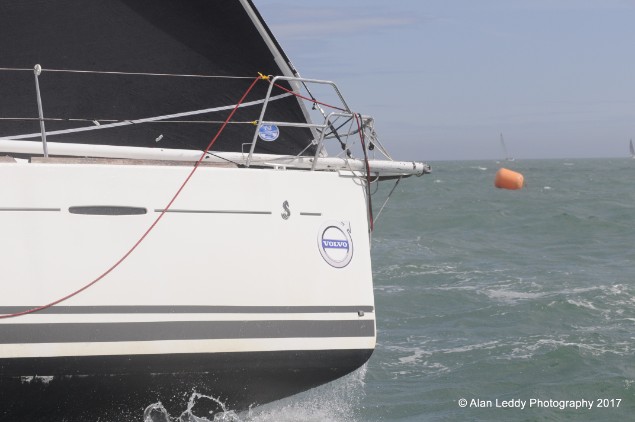
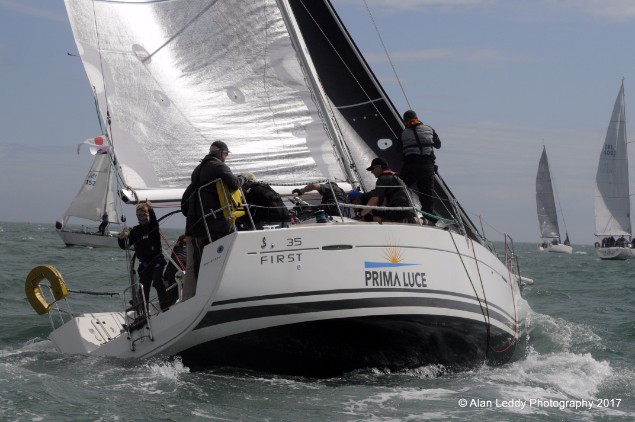
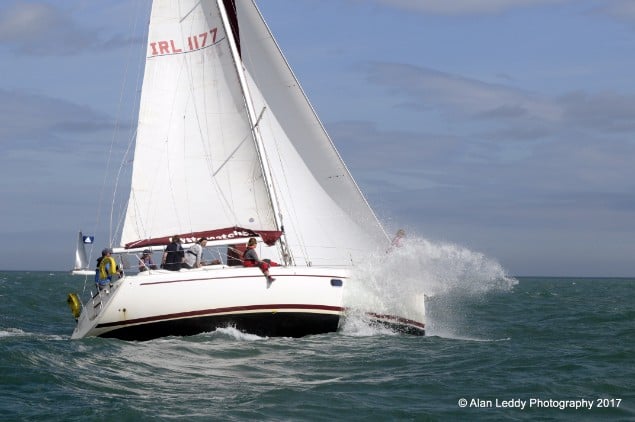
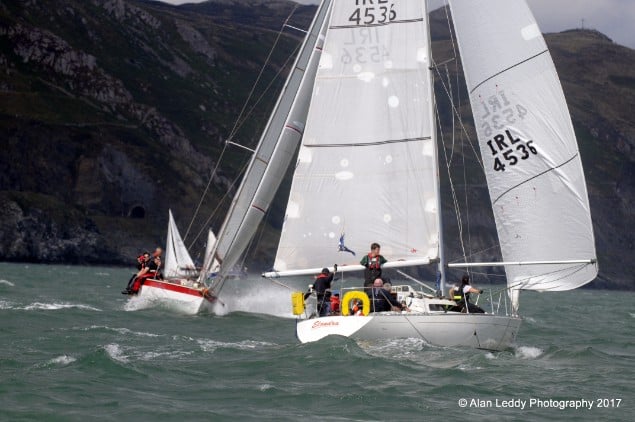
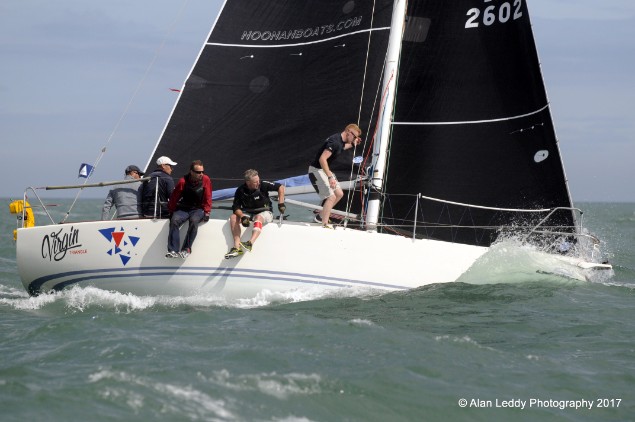

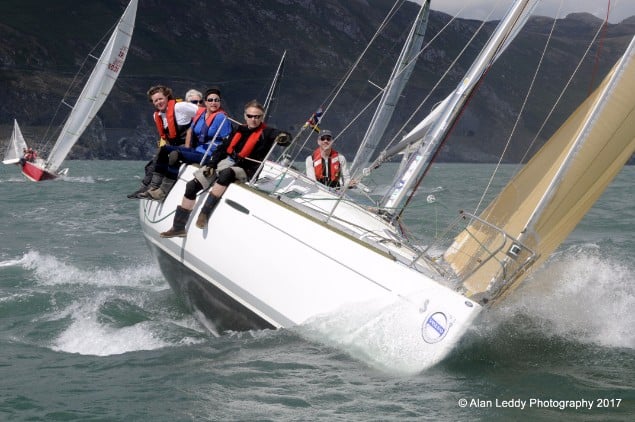



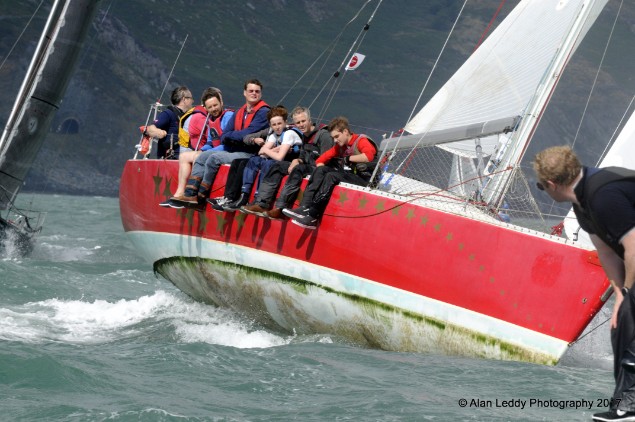
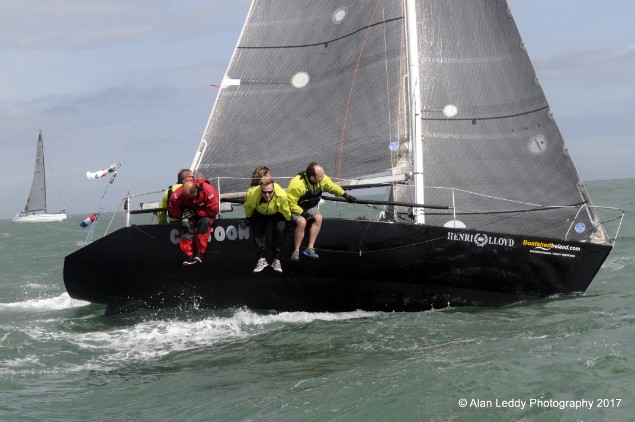
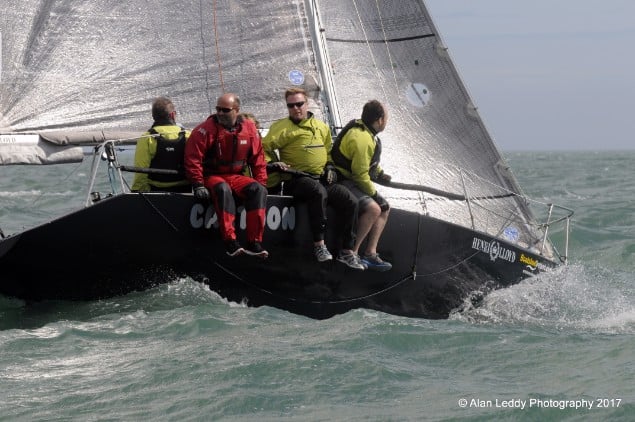

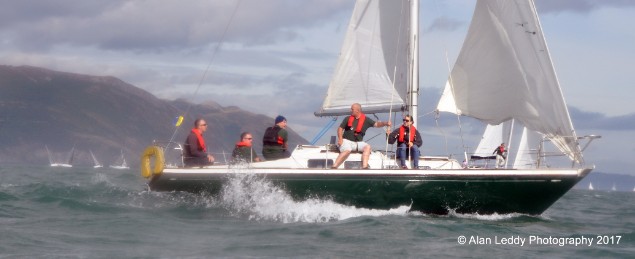
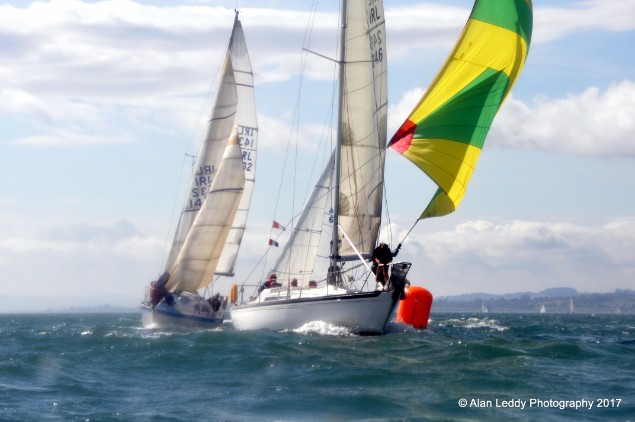

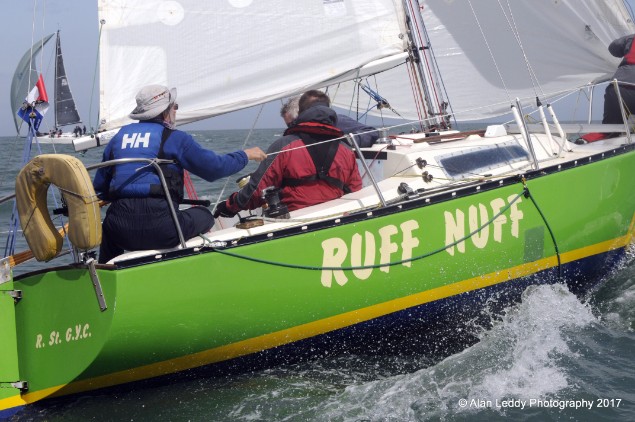
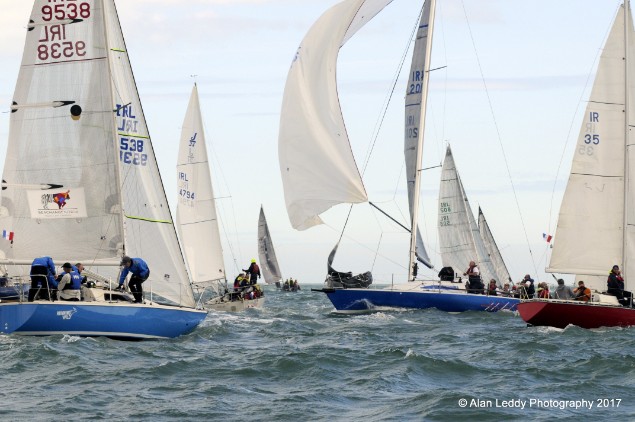
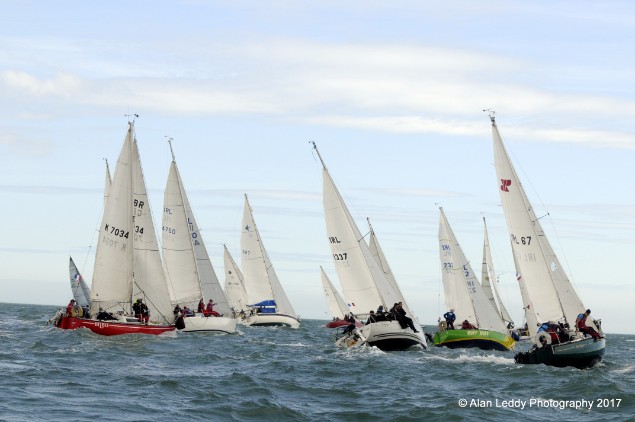
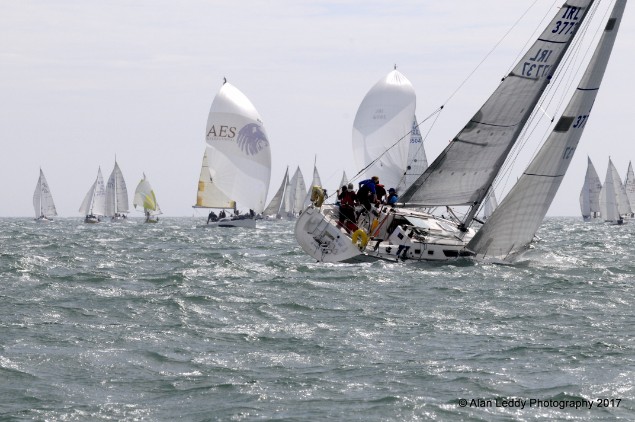


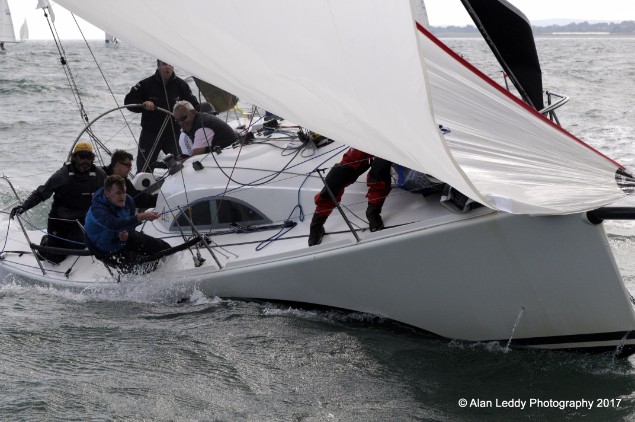
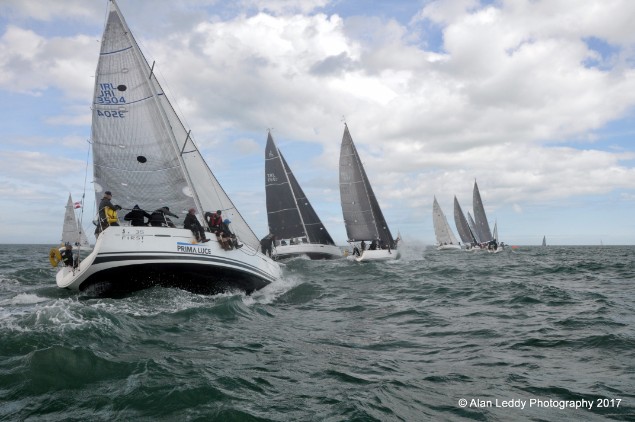
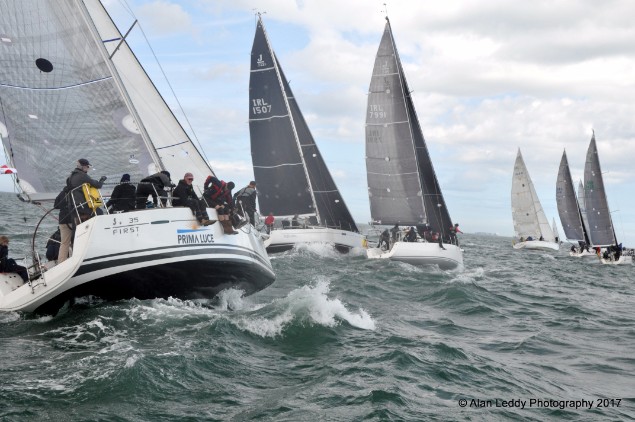
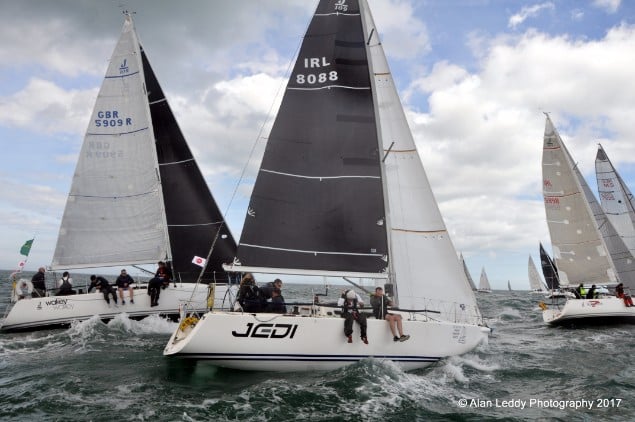
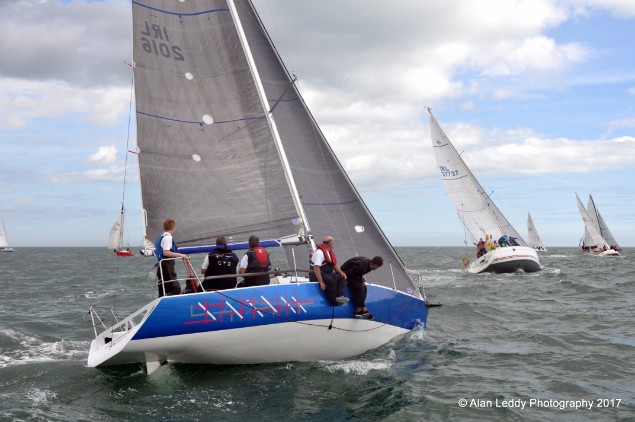
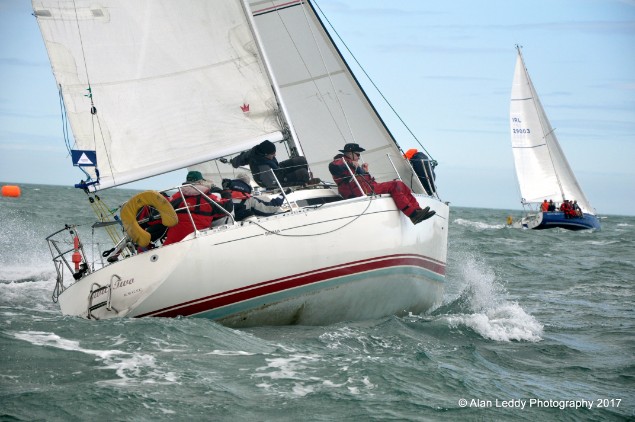

Work Begins On New Homes At Greystones Marina Development
#Greystones - Following moves to complete clubhouses for Greystones Harbour users comes news that work is resuming on the delayed residential part of the €300 million marina development.
According to The Irish Times, the first of an expected 350-plus new homes will be offered for sale by April 2016 after new builders Bridgedale Homes were appointed to the waterfront development to complete the housing and landscaping aspects.
Commercial units will follow later in the new year – and in the meantime, the five clubs awaiting their new facilities have been handed €1 million for fitting out the buildings in time for spring.
The Irish Times has more on the story HERE.
Greystones Marina Fuel Berths (Petrol & Diesel) Ready for 2016 Season
Greystones Harbour Master Alan Corr has revealed the latest plans at Ireland's newest coastal marina facility are to include both diesel and petrol pontoons at the 200–berth marina, bringing much needed waterside fuel supplies to the Wicklow coast. 'We are in process of quoting for the pumps, tanks are down and feeder pipes are fed but the final installation is usually the longest process', Corr told Afloat.ie
The marina building, will also be starting soon, Corr said.
Royal St. George's Rupert Wins Sigma 33 Race to Greystones
#sigma33 – The Dublin Bay Sigma 33 fleet held their inaugural race to Greystones last Saturday for the "Night Cap Trophy". A fleet of six boats competed. The race was from Dublin Bay to the Mouldich and then to the Greystones Sailing Club finishing line.
After leaving the Bay in a 14–knot westerly and an ebb tide the fleet separated with Rupert (Dick & Philip Lovegrove) setting a course to seaward under spinnaker and the rest of the fleet sailing towards Bray. Approaching Molditch the wind died to 4 knots with Rupert holding a substantial lead on White Mischief (Tim Goodbody).
It was only a mile to the finish from the Molditch on a close Spinnaker reach. In the light conditions and an ebb tide sailing became difficult. White Mischief gradually caught up on Rupert and for the last 20 minutes sailed to the finish line overlapped. It was a very tight race and after 2 hrs 49 minutes each boat drew on all their sailing skills to hold their nerve in the tense moments as the two boats approached the finish neck and neck in the light conditions. In the end the laurels went to the crew of Rupert. The fleet retired to Greystones Sailing club for the prize giving.
1st – Scratch Rupert (Dick & Philip Lovegrove)
1st – (Echo) Leeuwin (Henry Leonard & Bobby Kerr)
Howth Yacht Club Cruisers Race to Greystones Marina
#hyc – Howth Yacht Club's annual cruiser Race to Greystones starts tomorrow. A course from HYC to the County Wicklow marina concludes with a prizegiving and reception at Greystones Sailing Club tomorrow at 5pm. The north Dublin 'Brass Monkeys' fleet will overnight in Greystones Marina.
Greystones Harbour Club Houses For Sea Scouts, Rowers, Sailors, Divers & Anglers Underway
#greystonesharbour – Work has started this week to build five new Greystones Harbour clubhouses in county Wicklow for Sea Scouts, Rowers, Sailors, Divers and Anglers. The clubhouses are being provided 'free' from harbour developer, Sisk, with completion expected at the end of this year, according to Wicklow town councillor Derek Mitchell.
The temporary boat compounds are now being moved to allow laying underground pipes and a permanent surface prior to the boats moving back in mid summer.
'it is great to see progress again and this will be a boost to marine and youth activity in the town. No other town in Ireland has given such great facilities to marine organisations' said Cllr Mitchell.
'The Harbour Project also won the best Civil Engineering project at the Local Government Awards.
Wicklow Brownies Get A Taste of Sailing at Greystones Harbour
#greystonesharbour – Delgany Brownies, Greystones Brownies and some of the Greystones Guides took part in a sailing taster day at Greystones Sailing Club on Sunday 5th October. The 40 girls spent half the day sailing Laser Picos with instructors outside the harbour learning how to sail while having lots of fun - the giggles and screams of delight could be heard by on lookers walking the newly opened North Pier. The girls loved their experience on the water with almost all of them having never sailed before. Event organiser and Senior Instructor Emma Hett said it was a "privilege to be able to facilitate the girls going sailing for the first time and I hope this will be the start of many more collaborative sessions between local community groups and Greystones Sailing Club." Emma also thanked the sailing club for hosting such a successful event and giving the girls an experience they will never forget.
The second half of the day was spent on shore with the girls completing their Irish Girl Guide Conservation badge and Water Safety badge. The girls completed a litter sweep of the local area collecting five large bags of rubbish. After the sweep the girls came back inside to learn about protected species in Ireland and make informative posters from recycled materials to illustrate all they had learned. Instructors Sarah Hoolahan (Greystones Sailing Club), Conor Duff-Lennon (Greystones Sailing Club) and Triona Harvey (Wexford Harbour Boat and Tennis Club) all said they learnt lots about conservation and the importance of teaching these issues to the young girls. All the instructors said that while the girls had fun they too had a blast and were delighted to be involved in the day. Safety Coordinate and Senior Instructor Steven Tyner "it was great to have so many girls come down to go sailing and see their excitement on the water in boats."
At the end of the day Brownies, parents, instructors and club members all gathered together in Greystones Sailing Club for a BBQ with special thanks to The Steak Shop, Greystones for part-sponsoring the costs of the burgers. David Nixon, Greystones Sailing Club Secretary and Fiachra Etchingham, Greystones Sailing Club Trustee both welcomed new members to the club and re-iterated Greystones Sailing Club's openness to new members, both old and young.
The day was run completely by volunteers giving up their time and a special thanks has to go to the instructors who all volunteered their Sunday to give back to their local communities. Finally a special thanks must go to Cllr Grainne McLoughlin who sought sponsorship for lunches for all the instructors and also homemade chocolate brownies for them all which went down a treat.






























